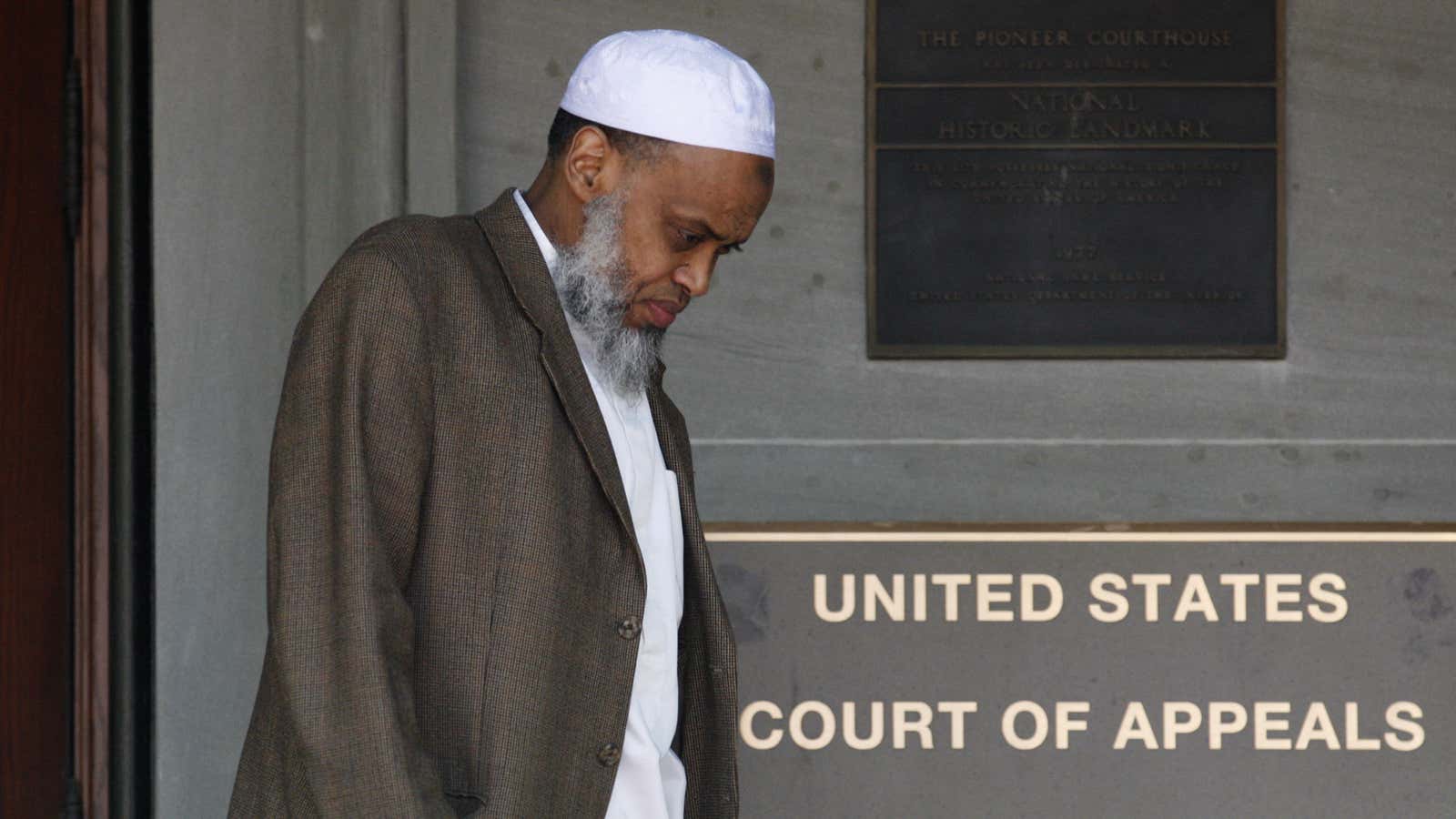Lawyers from the venerable American Civil Liberties Union will argue in a federal court today (Dec. 9) that the so-called “no-fly list” violates Americans’ due process—even as the political stakes over its very existence have flipped.
Before the 9/11 attacks, the US barred 16 people from transit. Afterward, the Bush administration amped up the “no fly” designation to bar travelers from flights when the government lacked the evidence to detain them for actual criminal activity.
In the atmosphere of then-vice president Dick Cheney’s 1% doctrine—“even if there’s just a 1% chance of the unimaginable coming due, act as if it is a certainty”—the list was criticized by liberals and libertarians but ultimately tolerated as a security measure.
As the list grew to 10,000 people in 2011 and 47,000 in 2013, it became embedded in the national security state under the Obama administration. While then-senator Barack Obama had criticized the Bush White House’s approach to surveillance and transparency, his own team has adopted many of its methods, even though security experts question whether the no-fly list has really increased security at airports.
Stories abound of accidental inclusion and Americans stranded overseas (though, for the record, Ted Kennedy was never on the list, despite urban legends to the contrary). Embracing the Kafkaesque overtones, US officials refused to confirm or deny anyone’s presence on the list, and there was no way to seek to remove your name if you suspected it might be there.
In 2010, the ACLU brought a case against the government on the behalf of 13 Americans and permanent residents, including four veterans, who were barred from flying in US airspace and suspected they were on the list.
By 2014, the case led federal judges to decide that the no-fly list was unconstitutional because it gave no possibility of redress, and ordered the court to tell the plaintiffs whether and why they were on the list. Seven were not on the list, while six received “unclassified ‘summaries'” of why they were on it. But the full reasoning remains secret; people on the list cannot access the full evidence against them, receive a hearing, or cross-examine witnesses against them.
That’s why the ACLU is back in court today—to make the case that this process still violates the constitutional right to due process. And legal analysts think the group has a good shot at winning.
But this debate has taken a strange turn after the San Berandino attacks and the renewed dialogue over gun control. As the US faces increasing numbers of mass shootings, driven variously by Islamist terror, racism, and mental illness, efforts to impose more safety checks on gun purchases or to limit the availability of high-capacity magazines or semi-automatic weapons have failed in the face of concentrated opposition from the gun industry and conservatives who take an extreme view of the second amendment.
Indeed, guns are so firmly embedded in the American political psyche, the only thing that might dislodge them is an acute fear of terrorism. And so Obama has asked Congress to ban people on the no-fly list from being able to purchase guns.
As the administration points out, this is something that Republicans have supported in the past, including presidential candidates like governors John Kasich and Chris Christie.
But some Republicans now apparently fear gun restrictions even more than terrorists.
“They shouldn’t be used as a tool to impede 700,000 Americans or potential Americans—people on that list—from having access to be able to fully utilize their second amendment rights,” senator and presidential candidate Marco Rubio said earlier this week. (It’s not clear where the 700,000 figure comes from, but it may be an exaggeration of the 680,000 people on the US intelligence community’s Terrorist Watch List, which is mostly foreign nationals.)
The Obama administration clearly sees an expeditious path to at least a modicum of more gun safety with its catchy “no fly, no buy” formulation. But it’s not clear at all that the list itself is useful in identifying potential threats and, even if it is, whether it meets the US constitutional test.
